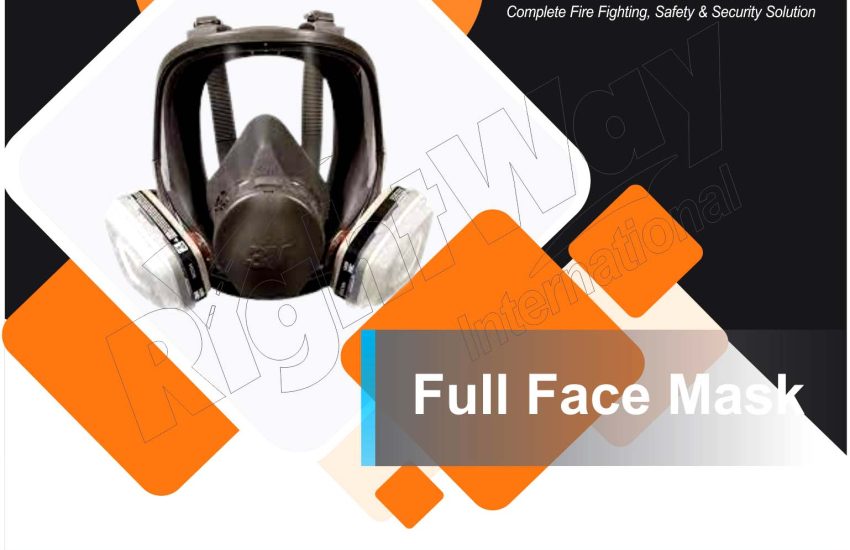Full-Face Masks serve as crucial personal protective equipment (PPE) designed to shield the entire face — including the eyes, nose, and mouth. They find broad application across industries, emergency response, and healthcare settings, protecting users from a wide variety of hazards.
1. Components of Full-Face Masks
A typical full-face mask consists of several integral components that work together to provide effective protection:
- Facepiece: The main body of the mask covers the entire face, creating a tight seal against environmental hazards. Manufacturers typically use durable materials such as silicone or rubber to ensure both comfort and effectiveness.
- Visor: A clear, protective lens provides visibility while shielding the eyes from debris, chemicals, or harmful particles.
- Filter or Cartridge: These attach to the mask and filter out pollutants, gases, vapors, or particulates. The filter type depends on the specific hazards present.
- Head Strap or Harness: Adjustable straps secure the mask firmly to the wearer’s head, maintaining a snug fit critical to preventing contaminants from entering.
- Exhalation Valve: This valve allows exhaled air to exit the mask, which reduces heat and moisture buildup inside the mask and prevents contaminants from re-entering.
2. Types of Full-Face Masks
Full-face masks come in different variants tailored to specific applications:
- Chemical Full-Face Masks: Equipped with specialized filters or cartridges, these masks protect against hazardous chemicals and vapors. They are commonly used in industrial settings, laboratories, and chemical handling.
- Respiratory Full-Face Masks: These include integrated breathing apparatus such as SCBA and are designed for environments with toxic gases, smoke, or oxygen deficiency. Firefighters, rescue workers, and personnel in high-risk environments rely on them.
- Medical Full-Face Masks: Used primarily in healthcare settings, these masks protect medical staff and patients from biological contaminants and may offer features for oxygen delivery or other treatments.
- Tactical Full-Face Masks: Military and law enforcement personnel use these masks in combat or tactical operations to defend against chemical, biological, radiological, and nuclear (CBRN) threats.
3. Applications
Full-face masks serve vital roles in various settings, including:
- Industrial Safety: Workers in manufacturing, construction, and chemical processing industries rely on these masks to guard against airborne hazards such as dust, chemicals, and fumes.
- Emergency Response: Firefighters and rescue teams wear full-face masks to protect against smoke, toxic gases, and other dangers during emergencies.
- Healthcare: Medical professionals and patients use these masks to reduce infection risk and ensure safe clinical environments.
- Military and Tactical Operations: Full-face masks offer critical protection during operations involving potential exposure to chemical or biological agents.
4. Maintenance and Care
To maximize the mask’s effectiveness and lifespan, proper maintenance is essential:
- Cleaning: Regularly clean the mask to remove contaminants and maintain hygiene, following manufacturer guidelines on cleaning agents and procedures.
- Inspection: Inspect the mask frequently for damage, such as cracks or tears in the facepiece, and check the filter and exhalation valve’s condition.
- Storage: Store the mask in a clean, dry environment away from extreme temperatures and direct sunlight to avoid damage.
5. Safety Considerations
Users should observe several important safety practices when using face masks:
- Fit and Seal: Ensure the mask fits properly and seals tightly to prevent contaminant entry. Conduct fit testing when necessary.
- Training: Users must receive proper training on how to use, maintain, and understand the limitations of the mask to ensure maximum protection.
- Compliance: Follow all relevant safety standards and regulations, such as those established by OSHA and NIOSH.
Conclusion
face masks provide indispensable protection by covering the entire face and safeguarding against harmful substances in diverse hazardous environments. By using these masks properly, maintaining them regularly, and adhering to safety guidelines, users can significantly reduce their risk of exposure to dangerous contaminants and maintain health and safety across multiple industries and emergency situations.


